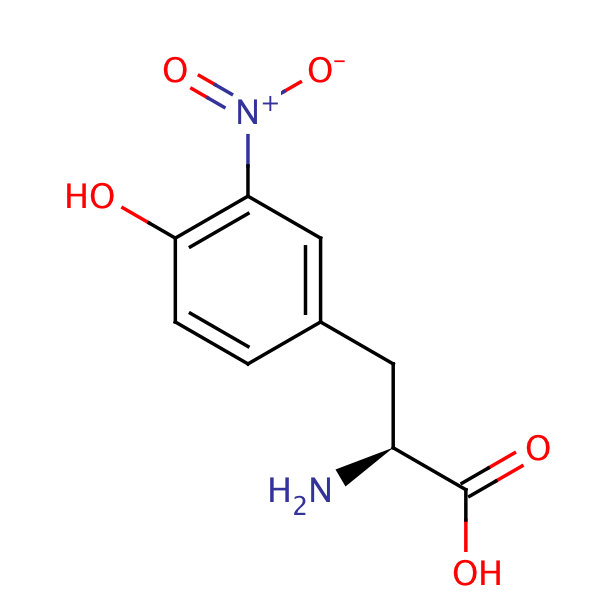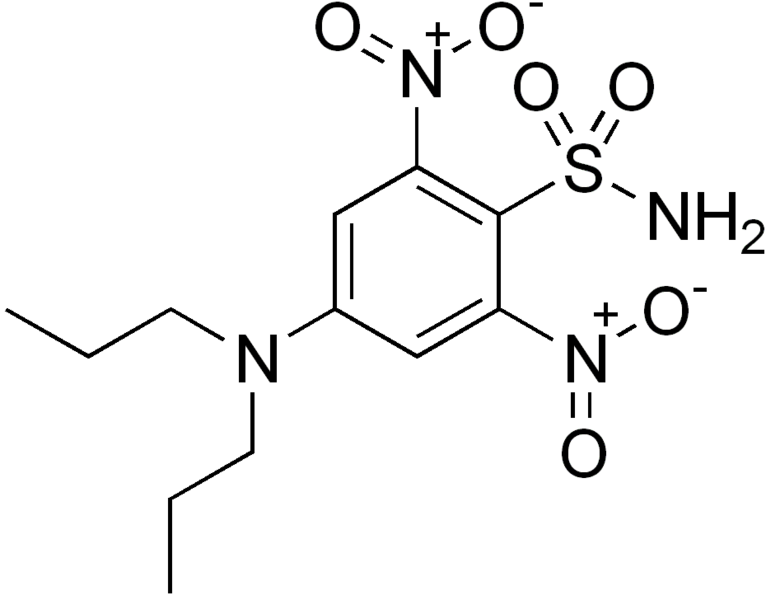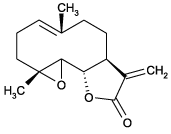Ethyl-N-Phenylcarbamate (EPC)
Background
Ethyl-N-phenylcarbamate (EPC, common name: Phenyl Urethane) is a sprouting inhibitor used for potato storage. Since the patent has expired many years ago, it is not used commercially any more. Like most microtubule inhibitors it acts by sequestering tubulin heterodimers, such that microtubules are eliminated depending on their innate turnover. Due to its simple structure, it is possible to synthetize derivatives that can be coupled to Aminoethyl-Sepharose, which allows to purifiy tubulin and tubulin-binding proteins by affinity chromatography. This approach has been developed and applied extensively in our lab.
Mode of Action
EPC can bind tubulin heterodimers, whereby it prefers detyrosinated a-tubulin (stringency 0.2-0.3 M KCl) over tyrosinylated a-tubulin (stringency <0.1 M KCl). By EPC-affinity chromatography we were able to show that the C-terminus of a-tubulin is necessary and sufficient for binding, whereby the carboxyterminal tyrosine is crucial. The binding prevents tubulin dimers from integration into the plus end, such that dynamic microtubules are eliminated depending on their innate turnover. Interestingly, different a-tubulin isotypes differ in their affinity for EPC. For instance OsTubA3 harbours a lower affinity as compared to OsTubA1 and OsTubA2. Active concentrations are in the range of 1-5 mM for coleoptile growth, but almost an order of magnitude lower for root growth or cell cultures.
Further tools and methods
A panel of rice mutants (gamma ray) that are resistant to EPC, have been isolated and characterized in our group. Especially the mutant ER31 has been analyzed in further detail. Later activation tagged tobacco mutants (ATER mutants) have been generated and analyzed. Among those, the mutant ATER2 was found to be endowed with reduced microtubule turnover (explaining the EPC resistance). This mutant was then found to be partially resistant to tobacco mosaic virus. A microcallus line derived from the rice ER31 mutant is presently investigated in the lab of Diego Breviario (IBBA, CNR, Milano) and shows differential responses between EPC and oryzalin confirming that the binding sites are different.
References
Screen for EPC-resistant mutants and characterization of the ER31 mutant: Nick et al. 1994
Application of EPC-resistance to generate a novel, biological "clean" selection marker for genetic engineering: Nick et al. 2003
EPC-affinity chromatography and binding site of EPC: Wiesler et al. 2002
Generation of activation-tagged EPC-resistant ATER tobacco mutants: Ahad et al. 2003.
Reduced microtubule dýnamics and increased virus resistance: Ouko et al. 2010
Nitrotyrosine
3-Nitrotyrosine (CAS 621-44-3) is produced by peroxynitrite-mediated nitration of tyrosine-residues in proteins and is generally thought to be a monitor of NO-production, e.g. in response to oxidative stress. The basal level of nitrotyrosine in the blood is around 3 nM, it is elevated during inflammation or in certain cancer cells. Nitrotyrosination of proteins has been associated with several diseases, such as arteriosclerosis (Beckman and Koppenol 1996).
There exist obviously several targets for 3-Nitrotyrosine, also in tubulin Tedeschi et al. 2005, but the C-terminal tyrosine of a-tubulins is unique, because, here, 3-Nitrotyrosine interferes with the natural cycle of detyrosination and retyrosination that seems to be conserved in all eukaryotes. It has been proposed that this 3-nitrotyrosine residue cannot be cleaved off by the tubulin-tyrosine-decarboxylase leading to microtubular dysfunction, which might explain the correlation between 3-Nitrotyrosine levels and certain tumours (Eiserich et al. 1999). This was mainly based on the finding that carboxypeptidase A that can cleave the natural C-terminal residue of tubulin, fails to do so with a C-terminal 3-Nitrotyrosine residue. However, this hypothesis has been questioned by experiments, where tubulin that thad been nitrotyrosinated in vitro, was microinjected into living cells and behaved essentially normally (Bisig et al. 2002). The question, whether the tubulinyl-tyrosine ligase is actually accepting 3-Nitrotyrosine as substrate, has been answered by experiments with recombinant enzyme that was observed to incorporate 3-Nitrotyrosine, although it prefers natural tyrosine by a factor of 25 x over 3-nitrotyrosine (Kalisz et al. 2000).
The effect of nitrotyrosine on plant cells was invesigated by Aleksandra Jovanovic and Steffen Durst. They found that nitrotyrosine impaired the correct orientation of the new cell plate (Jovanovic et al. 2010).
Oryzalin
Background
Oryzalin is a dinitro-aniline herbicide and eliminates plant microtubules. The binding to animal microtubules is weak, therefore it is used as alternative to colchicine in plant cell biology, for instance during synchronization of tobacco BY-2 cells or to probe for functions conveyed by plant microtubules
Mode of action
Similar to EPC and the other antimicrotubular compounds, Oryzalin acts by sequestering soluble tubulin heterodimers from integration into the growing microtubule. Depending on the innate turnover of microtubules, they shrink and eventually disappear. This means that stable microtubules with low turnover persist to Oryzalin. The Kd of binding is in the range of 100 nM. In most systems, 1-10 µM are sufficient to eliminate microtubules within hours. The binding site of Oryzalin has been identified based on resistant mutants in Eleusine indica (Indian Goosegrass), and transformation of calli with the mutated tubulin was sufficient to confer resistance to Oryzalin.
References
Parthenolide
Background
Parthenolide is a sesquiterpene isolated from Tanacetum parthenium (Mutterkraut, Feverfew, Asteraceae) and blocks the Tubulinyl Tyrosine Decarboxylase. It has thus the same effect as nitrotyrosine (increased levels of tyrosinated tubulin), but achieves this effect by a different mechanism. Parthenolide was discovered in a screen for anti-cancerogenic substances from a chemical library in cells that expressed reduced levels of TTL and therefore accumulated detyrosinated tubulin.
Application to plant cells
Parthenolide was investigated in two diploma theses (Holger Ludwig, 2010; Natalie Schneider, 2010) in tobacco BY-2 cells. The effective concentrations were in the range of 20-30 µM for long-term experiments, and 100 µM for short-term experiments. An ethanolic stock solution of 80 mM was used. Biological effects included reduced mitosis and culture growth, but also specific induction of the pathogen-triggered proton channels that cause alkalinization, and disorientation of metaphase plates. The effect on detyrosination was assessed by Western blotting and confirmed for BY-2. Interestingly, a line overexpressing a putative TTL homologue from rice, was not sensitive to parthenolide indicating that this homologue is not acting as a TTL.
References
Fonrose X, Ausseil F, Soleilhac E, Masson V, Davin B, Pouny I, Cintrat JC, Rousseau B, Barette C, Massiot G, Lafanechére L (2007) Parthenolide inhibits tubulin carboxypeptidase activity. Cancer Res 67, 3371-3378 - pdf (description of the mode of action)
_____________________________________
Letzte Änderung: 15.03.2011
© 2011 Peter Nick, Botanisches Institut, alle Rechte vorbehalten. Ihre Meinung zu unserem Webauftritt ist uns wichtig - schreiben Sie uns!



